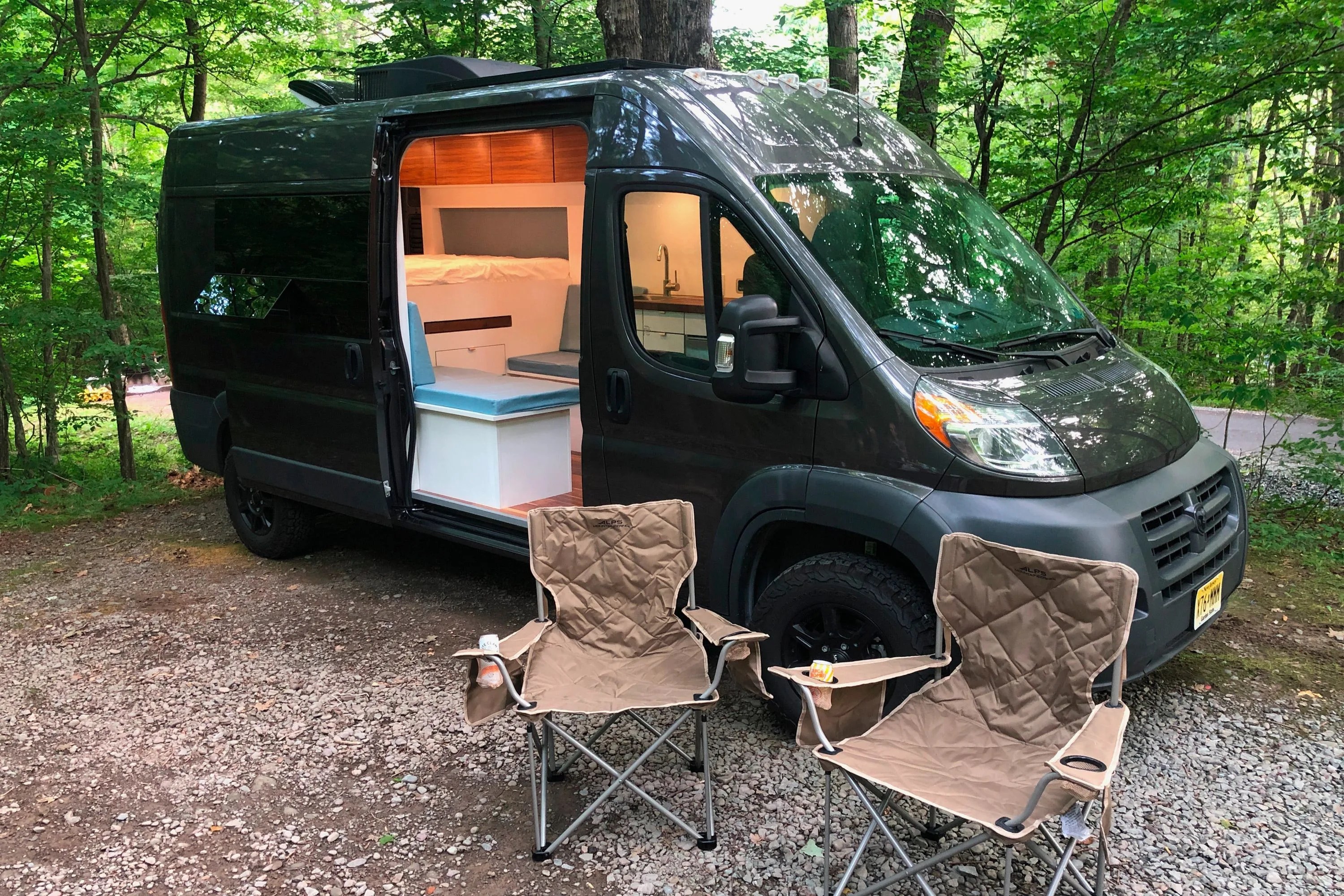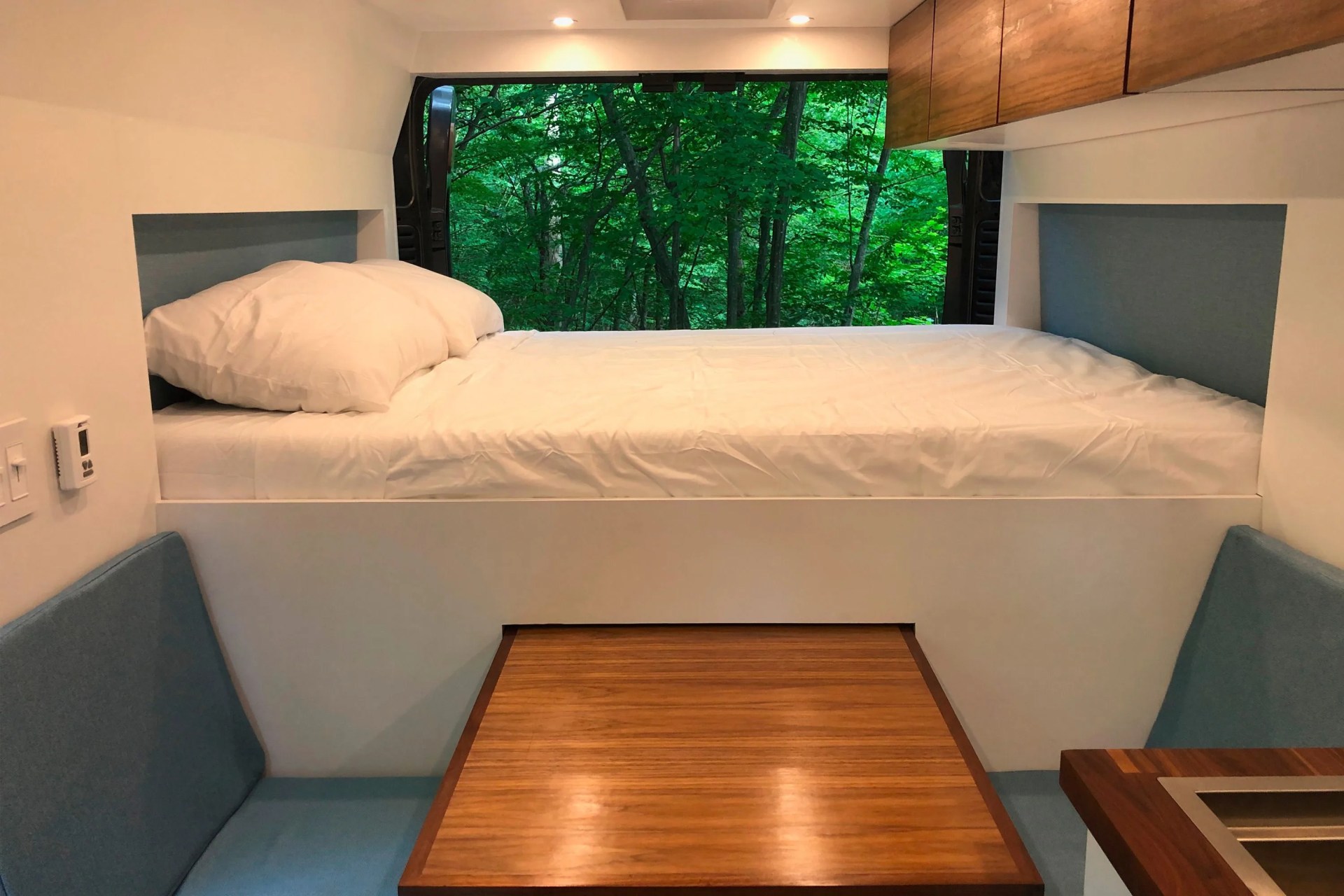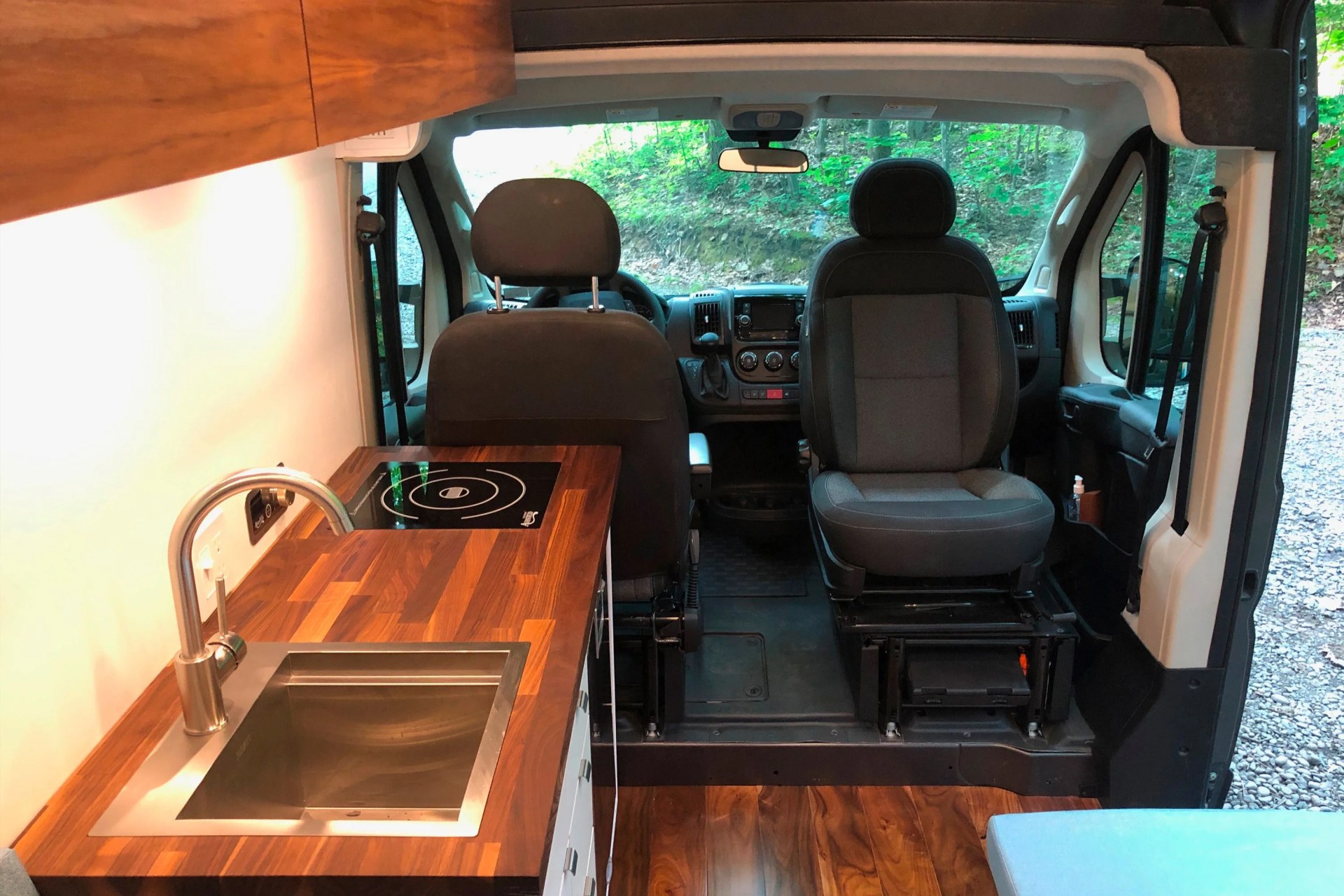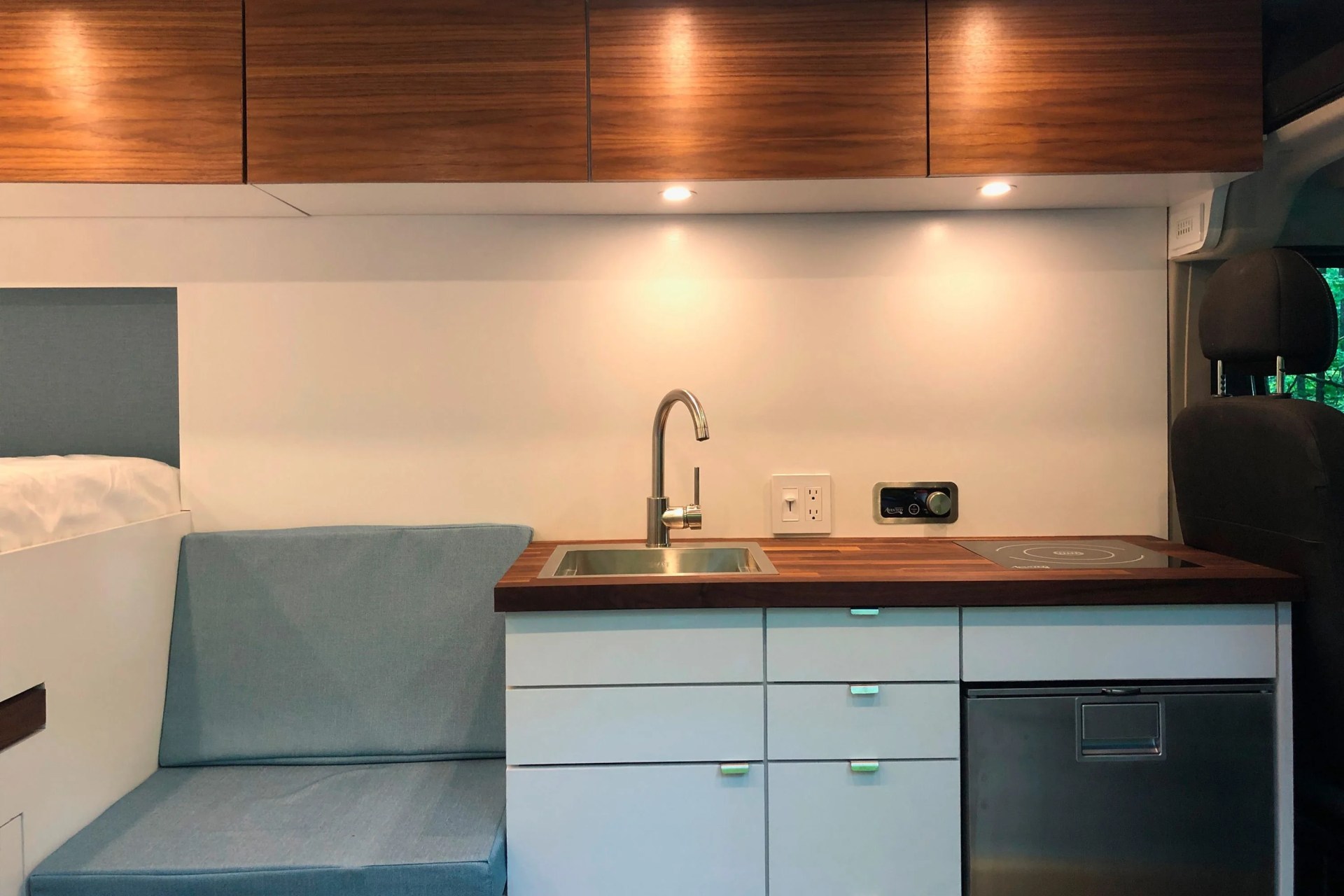The year 2020 is bound to be remembered for many things, most of them not so good. But for many Americans, one silver lining may be that it was the year they first considered camper vans as a viable addition to their lives.
Coincidentally, 2020 also happens to be the year that New Jersey-based Ready.Set.Van’s operations jumped into high gear. The company relocated to a new 11,500-square-foot facility outside Trenton this year, which has enabled them to better keep pace with their booming order, the wait time for a new van now only stretches out to five or six months.
But it’s one thing to ogle the #vanlife pictures on Instagram; it’s another to actually taste that life for yourself. So to see what it’s actually like to escape the madness of the rat race and the real world in a camper van, I borrowed one of Ready.Set.Van’s rigs — a brown model equipped with a large bed, a refrigerator, induction stovetop, pop-out table and outdoor shower, which retails for around $80,000 — for a serene weekend of camping.
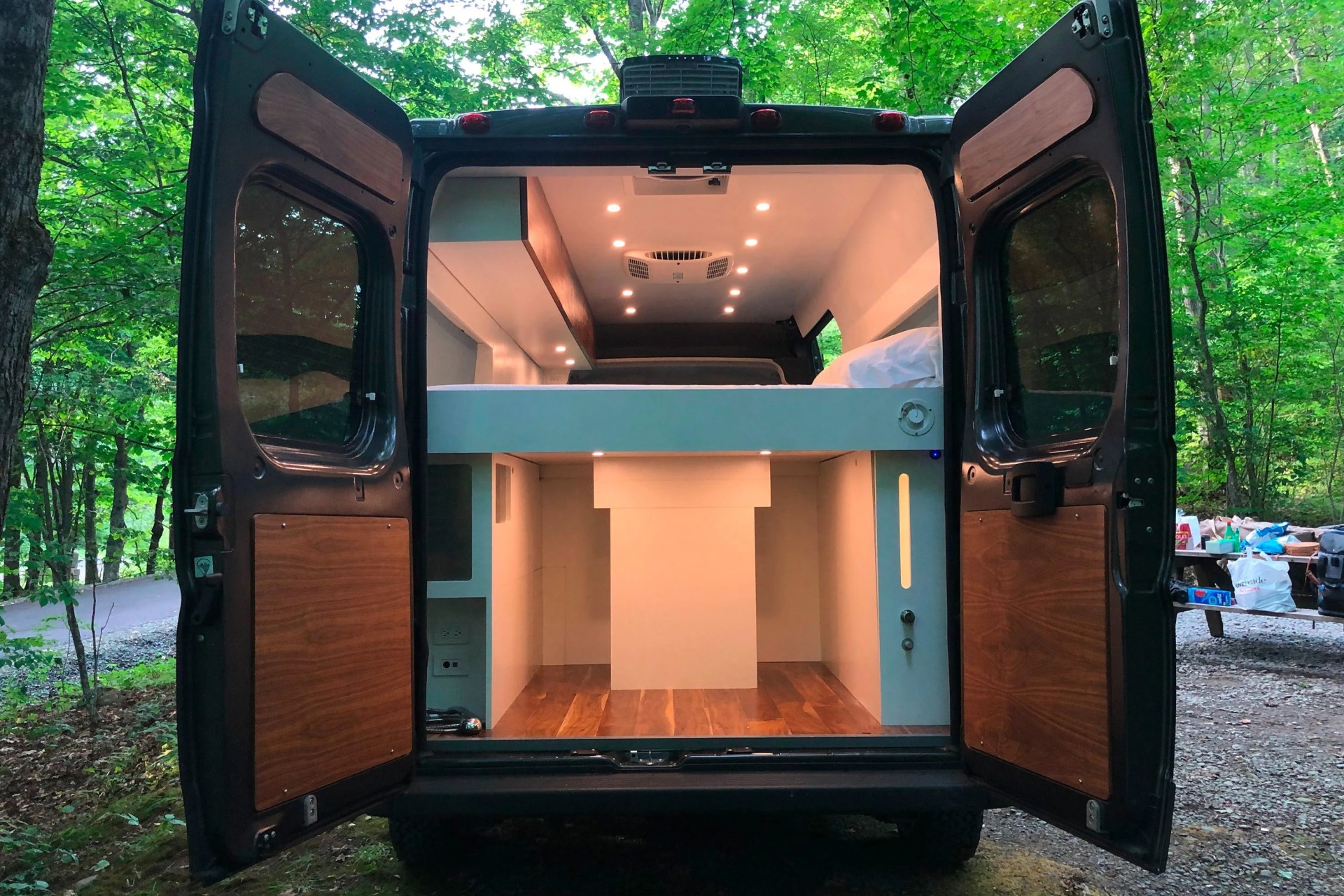 Will Sabel Courtney
Will Sabel CourtneyDriving a camper van isn’t like driving, say, a minivan
Ready.Set.Van uses the Ram Promaster because it’s as big as a full-size van can be while still being able to fit into a regular-sized parking spot. That might make it sound tidy of proportions in the abstract; climb behind the wheel, though, and you’ll realize that actually means that if the camper was any bigger, it’d be a bus. Maneuvering through tight campgrounds and car-centric parking lots requires a steady hand and frequent checks of the mirrors.
Unless you spend a lot of time with high-roof cargo vans, the driving position —very upright, very high up — feels strange. You sit taller than even pickup trucks and full-size SUVs; it’s strange to gaze down on the roof of an Escalade as it drives by.
